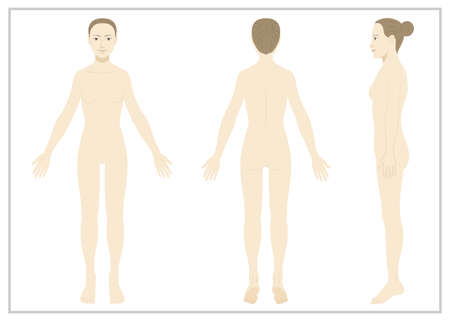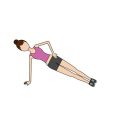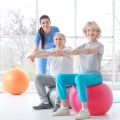1. Introduction to Parkinsons Disease and Rehabilitation
Parkinson’s disease (PD) is a progressive neurological disorder that affects movement and can impact daily life in many ways. It is most common in people over 60, but younger adults can be diagnosed as well. In the United States, Parkinson’s affects nearly one million people, making it the second most common neurodegenerative disease after Alzheimer’s.
Overview of Parkinson’s Disease
Parkinson’s disease occurs when certain nerve cells in the brain that produce dopamine begin to break down or die. Dopamine is essential for controlling movement and coordination. As these cells decrease, symptoms gradually develop and worsen over time.
Main Symptoms of Parkinson’s Disease
| Motor Symptoms | Non-Motor Symptoms |
|---|---|
| Tremors (shaking) | Sleep disturbances |
| Muscle stiffness (rigidity) | Mood changes (depression, anxiety) |
| Slowed movements (bradykinesia) | Memory problems |
| Balance issues and falls | Autonomic changes (constipation, blood pressure) |
Standard Rehabilitation Approaches in the U.S.
Rehabilitation plays an important role in helping people with Parkinson’s maintain independence and quality of life. In America, a combination of therapies is usually recommended:
- Physical Therapy: Focuses on improving strength, flexibility, balance, and mobility to reduce fall risk.
- Occupational Therapy: Helps patients adapt daily activities and home environments to maximize independence.
- Speech Therapy: Addresses voice volume, speech clarity, and swallowing difficulties.
- Medication Management: Most patients use medications like levodopa to manage symptoms alongside therapy.
- Lifestyle Modifications: Nutrition counseling, exercise routines, and support groups are commonly encouraged.
The Role of Complementary Therapies
While traditional rehabilitation methods are effective, there is growing interest in complementary treatments such as music and dance therapy. These approaches aim to enhance both physical abilities and emotional well-being for those living with Parkinson’s disease.
2. Foundations of Music and Dance Therapy
What Are Music and Dance Therapy?
Music therapy is a clinical use of music to address physical, emotional, cognitive, and social needs. It involves listening to music, singing, playing instruments, or even composing music. Dance therapy, also called dance/movement therapy (DMT), uses movement and dance to support emotional, social, cognitive, and physical integration.
Theoretical Backgrounds
Both therapies are built on the idea that music and movement can influence brain function and behavior. In Parkinson’s disease rehabilitation, these therapies use rhythm and structured movement to help improve motor control and reduce symptoms like stiffness or freezing. Music stimulates multiple areas of the brain at once, while dance helps retrain balance, coordination, and flexibility.
Theories Behind the Therapies
| Therapy | Main Theory | How It Helps in Parkinson’s Disease |
|---|---|---|
| Music Therapy | Neurologic Music Therapy (NMT) | Uses rhythm to cue movement; helps with gait training and speech clarity. |
| Dance Therapy | Laban Movement Analysis; Somatic Theories | Focuses on body awareness; improves balance and mobility through guided dance steps. |
Integration into U.S. Rehabilitative Care
In the United States, music and dance therapy are recognized as complementary treatments within many rehab programs for Parkinson’s disease. Certified music therapists (MT-BC) and dance/movement therapists (R-DMT or BC-DMT) often collaborate with neurologists and physical therapists. These therapies are offered in hospitals, outpatient clinics, community centers, and even online programs.
How Sessions Work in Practice
- Music Therapy: Patients might walk in time with a beat to improve stride or sing exercises to strengthen vocal cords.
- Dance Therapy: Group classes may include styles like tango or waltz because their rhythmic patterns aid movement initiation and fluidity.
Cultural Fit in the U.S.
Music and dance therapy programs in the U.S. often incorporate American popular music genres or culturally familiar dances to boost engagement. Many support groups also use these therapies as social events, building community among people living with Parkinson’s disease.
![]()
3. Evidence-Based Benefits of Music and Dance Therapy
How Music and Dance Make a Difference in Parkinson’s Disease
Recent scientific studies show that music and dance therapy offer real benefits for people living with Parkinson’s Disease (PD). These therapies go beyond traditional rehab exercises by combining movement, rhythm, and emotional expression. Let’s break down the evidence-based advantages for physical, cognitive, and emotional health.
Physical Benefits
Music and dance therapy help improve movement, balance, and coordination. The rhythm in music provides cues that support walking and movement, making it easier for people with PD to start moving and keep a steady pace. Dance classes—especially styles like tango or waltz—have been shown to increase flexibility, strength, and posture while reducing the risk of falls.
| Physical Benefit | How It Helps |
|---|---|
| Improved Gait | Music rhythms cue smoother walking patterns |
| Better Balance | Dancing builds core strength and stability |
| Increased Flexibility | Dance movements stretch muscles and joints |
| Enhanced Coordination | Synchronized steps boost body control |
| Reduced Freezing Episodes | Rhythmic cues help overcome movement blocks |
Cognitive Benefits
Cognitive skills often decline with Parkinson’s, but engaging in music and dance can help keep the mind sharp. Research finds these activities support attention, memory, and problem-solving abilities by challenging participants to remember steps or follow musical patterns. This mental engagement strengthens brain pathways affected by PD.
| Cognitive Benefit | Description |
|---|---|
| Improved Attention Span | Following routines keeps the brain focused |
| Memory Support | Remembering dance steps exercises memory skills |
| Better Executive Functioning | Planning movements boosts decision-making skills |
| Mental Flexibility | Switching between rhythms enhances adaptability |
| Faster Processing Speed | Quick responses to music challenge the brains timing abilities |
Emotional Benefits
The emotional impact of music and dance is just as important as the physical changes. People with Parkinson’s often face depression, anxiety, or social isolation. Group classes foster a sense of community, reduce stress, and promote self-expression. Studies show regular participation can lift mood, boost confidence, and even lower rates of depression.
| Emotional Benefit | Description |
|---|---|
| Mood Improvement | Dancing releases feel-good endorphins in the brain |
| Anxiety Reduction | The focus on movement and music calms nerves |
| Social Connection | Group sessions build friendships and support networks |
| Increased Self-Confidence | Learners gain pride mastering new moves |
| Stress Relief | The creative outlet helps people relax |
Summary Table: Key Benefits at a Glance
| Type of Benefit | Main Impact |
|---|---|
| Physical | Smoother movement, better balance, less freezing |
| Cognitive | Keeps brain active, improves memory |
| Emotional | Lifts mood, reduces stress, fosters connection |
The research is clear: music and dance therapy aren’t just fun—they play a powerful role in supporting rehabilitation for people with Parkinson’s Disease in ways that are meaningful both inside and outside the clinic.
4. Implementing Music and Dance Therapy in Clinical Settings
Structuring Music and Dance Therapy Sessions for Parkinson’s Disease
Music and dance therapy sessions for people with Parkinson’s disease are carefully planned to address both motor and non-motor symptoms. In the United States, these sessions often blend clinical expertise with cultural preferences, making them more engaging and effective for participants. Typically, a session lasts between 45 to 60 minutes and is led by trained music or dance therapists who understand the unique needs of Parkinson’s patients.
Key Components of a Typical Session
| Session Element | Description | Culturally Relevant U.S. Example |
|---|---|---|
| Warm-up | Gentle stretching and breathing exercises to prepare the body | Using classic American folk songs or slow jazz as background music |
| Rhythmic Movement Activities | Simple step patterns or arm movements synchronized with music beats | Clapping to Motown hits or stepping to country music rhythms |
| Dance/Movement Segment | Guided dance routines tailored to participants’ mobility levels | Simplified line dancing or adapted ballroom steps popular in community centers |
| Cognitive Engagement | Activities that combine movement with memory tasks or song lyrics recall | Singing along to familiar tunes from the ‘50s or ‘60s while moving |
| Cool Down & Reflection | Relaxation exercises and group discussion about the experience | Listening to calming American folk ballads or sharing personal stories related to music and dance |
Practical Considerations for U.S. Clinicians and Caregivers
- Diversity in Music Selection: Choose music that reflects the cultural backgrounds and personal tastes of your group. For example, some may prefer gospel, while others enjoy rock ‘n’ roll or hip-hop.
- Accessibility: Ensure the space is safe for movement, with support bars or chairs available. Adapt movements so everyone can participate, whether standing, seated, or using mobility aids.
- Community Collaboration: Many U.S. communities have local musicians or dance instructors willing to volunteer their time for special sessions. Partnering with local organizations can enrich the program.
- Caregiver Involvement: Encourage caregivers to join in. Shared experiences through music and dance can strengthen relationships and provide social support.
- Documentation: Keep simple records of each session’s activities and participant responses. This helps track progress and tailor future sessions.
Sample Weekly Plan for a U.S.-Based Parkinson’s Dance Group
| Day | Main Activity Focus | Cultural Touchpoint |
|---|---|---|
| Monday | Singing with rhythmic hand movements | Songs from Broadway musicals like “Oklahoma!” or “The Sound of Music” |
| Wednesday | Simplified swing dance steps with partners or chairs for support | Classic big band music from Glenn Miller or Duke Ellington era |
| Friday | Meditative cool-down with guided imagery set to acoustic folk guitar music | Tunes inspired by American folk artists such as Bob Dylan or Joan Baez |
5. Patient Experiences and Community Resources
Real-Life Stories: How Music and Dance Make a Difference
Many people living with Parkinson’s Disease in the U.S. have found hope and improvement through music and dance therapy. For example, John, a retired teacher from Ohio, joined a local “Dance for PD®” class after his diagnosis. He shared that dancing not only helped him move more easily but also gave him confidence and a sense of belonging. Similarly, Maria, from California, attends weekly drumming circles designed for people with Parkinson’s. She says the rhythm helps her manage tremors, while making friends in the group lifts her spirits.
Support Networks in the United States
Across the country, support networks help connect patients with music and dance therapy options. National organizations like the Parkinson’s Foundation and American Parkinson Disease Association (APDA) offer lists of local classes and events. Local community centers, senior centers, and hospitals often partner with certified therapists to provide accessible programs. These groups not only focus on movement but also encourage social connections, which are crucial for emotional well-being.
Popular Music and Dance Therapy Programs
| Program Name | Description | Location/Access |
|---|---|---|
| Dance for PD® | Professional dancers lead movement classes specifically for people with Parkinson’s Disease. | Available in over 300 communities across the U.S.; many offer virtual sessions. |
| Music Mends Minds | Group music-making sessions (bands/choirs) tailored for those with neurological conditions. | Mainly in California; expanding nationwide; virtual options available. |
| Pilgrim Soul Creative Workshops | Creative arts workshops including music and movement for brain health. | Various community centers throughout the U.S. |
| PWR! (Parkinson Wellness Recovery) | Includes movement and rhythm-based classes for physical wellness. | Nationwide network of gyms and clinics; online programs too. |
How to Find Local Resources
If you or a loved one is interested in trying music or dance therapy as part of Parkinson’s rehabilitation, start by asking your neurologist or physical therapist for recommendations. You can also search the websites of organizations like the Parkinson’s Foundation or APDA for program directories by zip code. Many communities offer free trial classes or scholarships to make these therapies accessible to everyone.


